 Contents Preface Explanation of Symbols Acknowledgements Introduction Chapter 1 Attacking motifs Part 1 Part 2 Chapter 2 Cooperation between the pieces Part 1 Part 2 Part 3 Part 4 Part 5 Chapter 3 Making use of open lines Chapter 4 Exploiting weaknesses Part 1 Part 2 Part 3 Part 4 Chapter 5 Stereotypical motifs in opening variations Part 1 Part 2 Part 3 Chapter 6 Training skills Part 1 Part 2 Chapter 7 Attacking games by ace players Index of Games Bibliography About the Author Swipe left for next chapterHerman GrootenAttacking Chess for Club PlayersImprove Your Skills to Overpower Your OpponentNew In Chess 2016 2016 New In Chess Published by New In Chess, Alkmaar, The Netherlands www.newinchess.com All rights reserved. No part of this book may be reproduced, stored in a retrieval system or transmitted in any form or by any means, electronic, mechanical, photocopying, recording or otherwise, without the prior written permission from the publisher. All photos: New In Chess Archives, unless indicated otherwise. Cover design: Ron van Roon Translation and supervision: Peter Boel Editing: Anne Haast Proofreading: Jimmy Adams, Ren Olthof, Frank Erwich Production: Anton Schermer Have you found any errors in this book? Please send your remarks to editors@newinchess.com. We will collect all relevant corrections on the Errata page of our website www.newinchess.com and implement them in a possible next edition. ISBN: 978-90-5691-655-8 This book is dedicated to my mother, Ellen Grooten-Asselbergs, who, alas, passed away in 2012.
Contents Preface Explanation of Symbols Acknowledgements Introduction Chapter 1 Attacking motifs Part 1 Part 2 Chapter 2 Cooperation between the pieces Part 1 Part 2 Part 3 Part 4 Part 5 Chapter 3 Making use of open lines Chapter 4 Exploiting weaknesses Part 1 Part 2 Part 3 Part 4 Chapter 5 Stereotypical motifs in opening variations Part 1 Part 2 Part 3 Chapter 6 Training skills Part 1 Part 2 Chapter 7 Attacking games by ace players Index of Games Bibliography About the Author Swipe left for next chapterHerman GrootenAttacking Chess for Club PlayersImprove Your Skills to Overpower Your OpponentNew In Chess 2016 2016 New In Chess Published by New In Chess, Alkmaar, The Netherlands www.newinchess.com All rights reserved. No part of this book may be reproduced, stored in a retrieval system or transmitted in any form or by any means, electronic, mechanical, photocopying, recording or otherwise, without the prior written permission from the publisher. All photos: New In Chess Archives, unless indicated otherwise. Cover design: Ron van Roon Translation and supervision: Peter Boel Editing: Anne Haast Proofreading: Jimmy Adams, Ren Olthof, Frank Erwich Production: Anton Schermer Have you found any errors in this book? Please send your remarks to editors@newinchess.com. We will collect all relevant corrections on the Errata page of our website www.newinchess.com and implement them in a possible next edition. ISBN: 978-90-5691-655-8 This book is dedicated to my mother, Ellen Grooten-Asselbergs, who, alas, passed away in 2012.
Although shedidnt know very much more about chess than the rules, she always supported me in word and deed in theindulging in my greatest passions, of which chess stood in first place.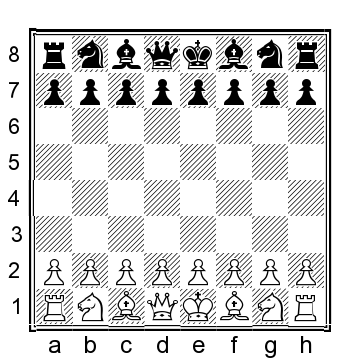 Explanation of SymbolsThe chess board with its coordinates: K King Q Queen R Rook B Bishop N Knight White stands slightly better Black stands slightly better White stands better Black stands better +- White has a decisive advantage -+ Black has a decisive advantage = balanced position ! good move !! excellent move ? bad move ?? blunder !? interesting move ?! dubious move unclear # mate Acknowledgements After Chess Strategy for Club Players, a book that was later awarded a prize, was published by New In Chess in 2009, the head of that company, Allard Hoogland, asked me to think about writing a new book. I rather liked that idea, but due to certain circumstances it took rather a long time before I actually got around to working on a new topic. Originally, the intention was to produce an improved version of my earlier book, which had appeared in Dutch as Deverdediging van de koning (in English: Defending the King). In it, I had shown the reader different ways of defending against attacks by the opponent. But soon, my starting-point changed. Wouldnt it be better if I took the side of the attacker, and, from his perspective, examine the ways in which attacks on the king might be successful? And then wouldnt it be preferable to write a book that stood out from other books on the same subject by virtue of a slightly alternative view? Together with my life partner FM Petra Schuurman, I have worked for years as a chess trainer with talented young players in our own training institute, Schaakcentrum Sterk Spel (in English: Chess Centre for Strong Play, www.sterkspel.nl).
Explanation of SymbolsThe chess board with its coordinates: K King Q Queen R Rook B Bishop N Knight White stands slightly better Black stands slightly better White stands better Black stands better +- White has a decisive advantage -+ Black has a decisive advantage = balanced position ! good move !! excellent move ? bad move ?? blunder !? interesting move ?! dubious move unclear # mate Acknowledgements After Chess Strategy for Club Players, a book that was later awarded a prize, was published by New In Chess in 2009, the head of that company, Allard Hoogland, asked me to think about writing a new book. I rather liked that idea, but due to certain circumstances it took rather a long time before I actually got around to working on a new topic. Originally, the intention was to produce an improved version of my earlier book, which had appeared in Dutch as Deverdediging van de koning (in English: Defending the King). In it, I had shown the reader different ways of defending against attacks by the opponent. But soon, my starting-point changed. Wouldnt it be better if I took the side of the attacker, and, from his perspective, examine the ways in which attacks on the king might be successful? And then wouldnt it be preferable to write a book that stood out from other books on the same subject by virtue of a slightly alternative view? Together with my life partner FM Petra Schuurman, I have worked for years as a chess trainer with talented young players in our own training institute, Schaakcentrum Sterk Spel (in English: Chess Centre for Strong Play, www.sterkspel.nl).
Since Petra has worked a lot with very young students, she formulated methods of attack on the king quite intensively and in accordance with certain schemes. Over the years, she found many beautiful examples, analysed them, and provided them with instructive commentary. These examples were handed out to the students as ready-to-use courses, naturally furnished with the necessary exercise material. It is therefore no coincidence that many of her pupils subsequently blossomed as true attacking artists. Although in my own training, strategic matters are prevalent, I am of course also frequently enchanted by the beauty of attacking motifs. And of course there was no getting round teaching our pupils a thing or two about the calculation of variations.
The attack on the king turns out to be an especially attractive topic for many youth and club players also because, by working on it, you can often achieve immediate success. And, last but not least, because it is quite simply an extremely attractive and creative topic! When our son Tommy was born in February 2010, our work on the book unfortunately came virtually to a standstill. We did manage, however, to think of a good concept for the book. This concept developed into something highly elaborate, partly because we wanted to give the reader a behind the scenes look. We also wanted the book to include specific features that we use in our training sessions. It is essential that we try not only to increase the knowledge of the chess student, but also, and to a greater extent, enhance their skills.
From our work as chess trainers we know all too well that to achieve success it is not sufficient to increase knowledge. Without certain skills, such as, for instance, the ability to visualize positions, a player will soon reach his limit. Thats why we have decided to bring our approach to training on these matters out into the open. As a leitmotiv throughout this book, we will discuss various (partial) skills. At the same time we have tried to offer exercises that are as concrete as possible, to exercise these skills. The secret of providing good training is having good sample positions at your disposal.
For this book, Petra and I have gathered together many examples we had stored in our computers. We classified all the positions and games according to our formulated structure. Then we noticed that for certain subsidiary topics, we had to find better, clearer examples. It seems that as a trainer you have to stumble upon such examples. During my work for the Dutch website schaaksite.nl (as well as its little brother newsaboutchess.com, the English-language site), many recent games passed through my hands, which I provided with comments for the visitors of these sites. And, slowly but surely, we managed to fill in all the gaps in our scheme.
However, in the meantime Petras work as a chess trainer had become less intensive because she had retrained to be a mathematics teacher. Therefore I set about studying all the examples for this book once again, which explains why sometimes the term we is used, and at other times I. Nowadays chess engines are much stronger than in the days when we started collecting examples. Thus the new engines provided us with new insights, which have been channelled into variations, backed up by verbal explanations. In our view, a chess student who plays through the examples is not greatly helped by variations if he doesnt know what to look for in a position. Our intention is to provide useful orientation in each of the presented positions.
Thus, the pupil can familiarize himself with the correct line of thought. We call these tools search strategies, which may be of help when a student tries to follow the right paths in a difficult position that requires a lot of calculation. The reader who plays through the fragments is advised to accept that with this subject we sometimes cannot avoid the occurrence of a multitude of variations. By way of compensation, he will encounter an abundance of unexpected and beautiful tactical motifs. In any case, we have tried not to indiscriminately adopt computer variations everywhere. We have translated these into chunks that are understandable for the human mind.
Next page
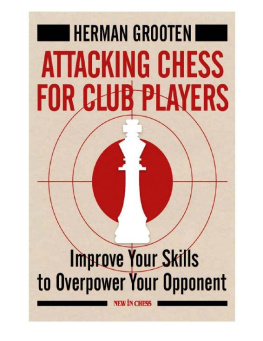

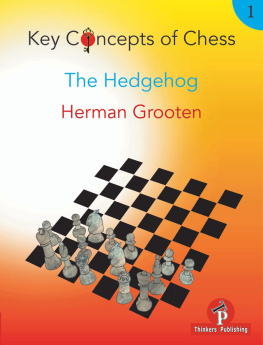


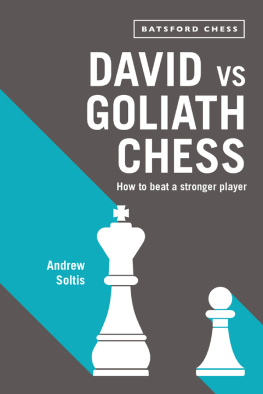
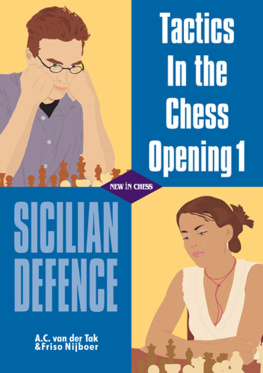
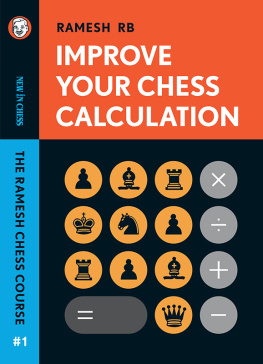
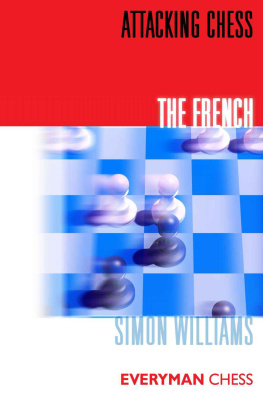
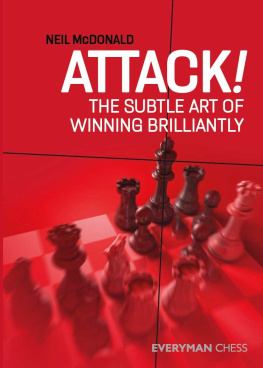
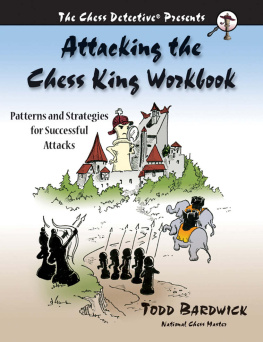
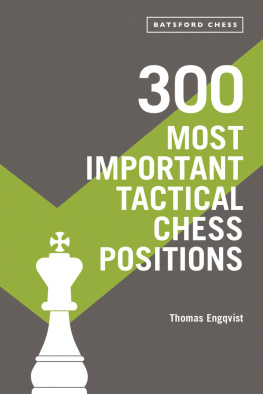
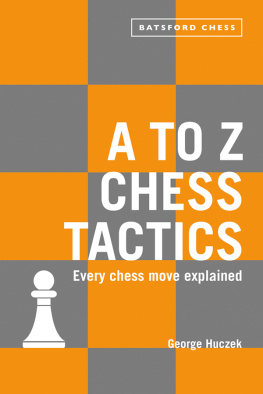
 Contents Preface Explanation of Symbols Acknowledgements Introduction Chapter 1 Attacking motifs Part 1 Part 2 Chapter 2 Cooperation between the pieces Part 1 Part 2 Part 3 Part 4 Part 5 Chapter 3 Making use of open lines Chapter 4 Exploiting weaknesses Part 1 Part 2 Part 3 Part 4 Chapter 5 Stereotypical motifs in opening variations Part 1 Part 2 Part 3 Chapter 6 Training skills Part 1 Part 2 Chapter 7 Attacking games by ace players Index of Games Bibliography About the Author Swipe left for next chapterHerman GrootenAttacking Chess for Club PlayersImprove Your Skills to Overpower Your OpponentNew In Chess 2016 2016 New In Chess Published by New In Chess, Alkmaar, The Netherlands www.newinchess.com All rights reserved. No part of this book may be reproduced, stored in a retrieval system or transmitted in any form or by any means, electronic, mechanical, photocopying, recording or otherwise, without the prior written permission from the publisher. All photos: New In Chess Archives, unless indicated otherwise. Cover design: Ron van Roon Translation and supervision: Peter Boel Editing: Anne Haast Proofreading: Jimmy Adams, Ren Olthof, Frank Erwich Production: Anton Schermer Have you found any errors in this book? Please send your remarks to editors@newinchess.com. We will collect all relevant corrections on the Errata page of our website www.newinchess.com and implement them in a possible next edition. ISBN: 978-90-5691-655-8 This book is dedicated to my mother, Ellen Grooten-Asselbergs, who, alas, passed away in 2012.
Contents Preface Explanation of Symbols Acknowledgements Introduction Chapter 1 Attacking motifs Part 1 Part 2 Chapter 2 Cooperation between the pieces Part 1 Part 2 Part 3 Part 4 Part 5 Chapter 3 Making use of open lines Chapter 4 Exploiting weaknesses Part 1 Part 2 Part 3 Part 4 Chapter 5 Stereotypical motifs in opening variations Part 1 Part 2 Part 3 Chapter 6 Training skills Part 1 Part 2 Chapter 7 Attacking games by ace players Index of Games Bibliography About the Author Swipe left for next chapterHerman GrootenAttacking Chess for Club PlayersImprove Your Skills to Overpower Your OpponentNew In Chess 2016 2016 New In Chess Published by New In Chess, Alkmaar, The Netherlands www.newinchess.com All rights reserved. No part of this book may be reproduced, stored in a retrieval system or transmitted in any form or by any means, electronic, mechanical, photocopying, recording or otherwise, without the prior written permission from the publisher. All photos: New In Chess Archives, unless indicated otherwise. Cover design: Ron van Roon Translation and supervision: Peter Boel Editing: Anne Haast Proofreading: Jimmy Adams, Ren Olthof, Frank Erwich Production: Anton Schermer Have you found any errors in this book? Please send your remarks to editors@newinchess.com. We will collect all relevant corrections on the Errata page of our website www.newinchess.com and implement them in a possible next edition. ISBN: 978-90-5691-655-8 This book is dedicated to my mother, Ellen Grooten-Asselbergs, who, alas, passed away in 2012. Explanation of SymbolsThe chess board with its coordinates: K King Q Queen R Rook B Bishop N Knight White stands slightly better Black stands slightly better White stands better Black stands better +- White has a decisive advantage -+ Black has a decisive advantage = balanced position ! good move !! excellent move ? bad move ?? blunder !? interesting move ?! dubious move unclear # mate Acknowledgements After Chess Strategy for Club Players, a book that was later awarded a prize, was published by New In Chess in 2009, the head of that company, Allard Hoogland, asked me to think about writing a new book. I rather liked that idea, but due to certain circumstances it took rather a long time before I actually got around to working on a new topic. Originally, the intention was to produce an improved version of my earlier book, which had appeared in Dutch as Deverdediging van de koning (in English: Defending the King). In it, I had shown the reader different ways of defending against attacks by the opponent. But soon, my starting-point changed. Wouldnt it be better if I took the side of the attacker, and, from his perspective, examine the ways in which attacks on the king might be successful? And then wouldnt it be preferable to write a book that stood out from other books on the same subject by virtue of a slightly alternative view? Together with my life partner FM Petra Schuurman, I have worked for years as a chess trainer with talented young players in our own training institute, Schaakcentrum Sterk Spel (in English: Chess Centre for Strong Play, www.sterkspel.nl).
Explanation of SymbolsThe chess board with its coordinates: K King Q Queen R Rook B Bishop N Knight White stands slightly better Black stands slightly better White stands better Black stands better +- White has a decisive advantage -+ Black has a decisive advantage = balanced position ! good move !! excellent move ? bad move ?? blunder !? interesting move ?! dubious move unclear # mate Acknowledgements After Chess Strategy for Club Players, a book that was later awarded a prize, was published by New In Chess in 2009, the head of that company, Allard Hoogland, asked me to think about writing a new book. I rather liked that idea, but due to certain circumstances it took rather a long time before I actually got around to working on a new topic. Originally, the intention was to produce an improved version of my earlier book, which had appeared in Dutch as Deverdediging van de koning (in English: Defending the King). In it, I had shown the reader different ways of defending against attacks by the opponent. But soon, my starting-point changed. Wouldnt it be better if I took the side of the attacker, and, from his perspective, examine the ways in which attacks on the king might be successful? And then wouldnt it be preferable to write a book that stood out from other books on the same subject by virtue of a slightly alternative view? Together with my life partner FM Petra Schuurman, I have worked for years as a chess trainer with talented young players in our own training institute, Schaakcentrum Sterk Spel (in English: Chess Centre for Strong Play, www.sterkspel.nl).